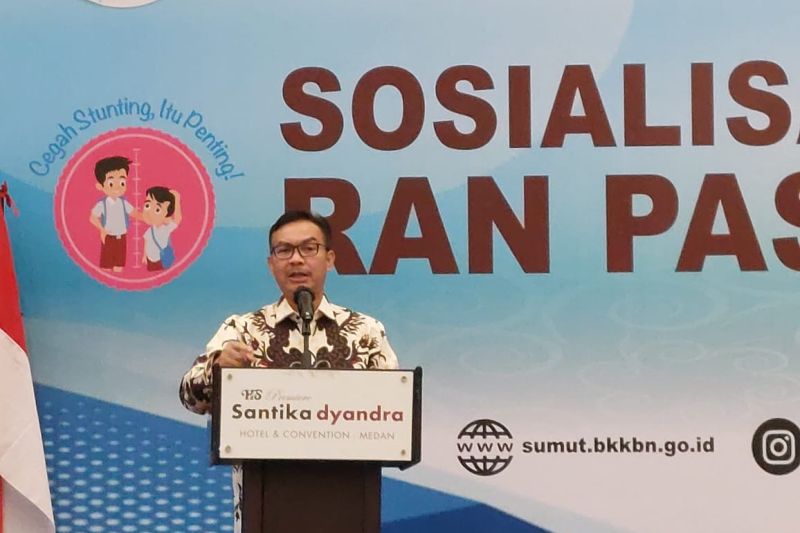“Programs, activities, and budgets to push for the reduction of stunting are complementary, so that the interventions provided are truly accepted by the target households. The problem of dwarfism throughout North Sumatra must be resolved,” Head of the National Population and Family Planning Agency, Hasto Wardoyo, noted in a written statement received here on Thursday.
Based on data from the 2021 Indonesia Nutrition Status Study, as many as 13 of the 33 regencies and cities in North Sumatra have a prevalence rate of above 30 percent.
The 13 districts and cities in question are Mandailing Natal, Padang Lawas, Pakpak Bharat, South Nias, North Nias, Dairi, North Padang Lawas, Nias, Padangsidempuan City, Langkat, Batubara, North Labuan Batu, and South Tapanuli.
“Mandailing Natal has a stunting prevalence rate of 47.1 percent, ranking second out of the 246 districts and cities in 12 priority provinces followed by Padang Lawas, with a prevalence rate of 42 percent, and it is included in the top 10 regions with (a worrisome condition),” he explained.
Some districts and cities falling in the yellow category that are described as having a stunting rate of 20-30 percent comprise Samosir, Simalungun, West Nias, Labuan Batu, South Labuhan Batu, North Tapanuli, Humbang Hasundutan, Gunung Sitoli City, Tanjung Balai City, Sibolga City, Central Tapanuli, Karo, Toba Samosir, and Binjai.
Meanwhile, districts and cities that fall in the green category, or with a prevalence rate of 10 to 20 percent, are Serdang Bedagai, Medan City, Asahan, Tebingtinggi City, Pematang Siantar City, and Deli Serdang.
To address the issue of high rate of stunting among newborns in North Sumatra, the agency has dispatched 10,323 family companion teams, or the equivalent of 30,969 family facilitators.
The agency has also involved universities by signing a memorandum of understanding through the Merdeka Campus Program to contribute to combating issues faced in 6,132 villages in the province. Only nine universities, or about two percent, have made an agreement with the agency.
Wardoyo emphasized that stunting was not a curse. However, it can cause an around two to three percent reduction in the gross domestic product (GDP) annually. For instance, if Indonesia’s GDP in 2020 was around Rp15,000 trillion, then the potential losses due to stunting would reach Rp450 trillion.
Thus, all need to contribute to overcome the problems impacting children, especially in North Sumatra.
Deputy Governor of North Sumatra Musa Rajekshah expects all leaders in his region to help one another to address this issue.
“The data provided by the National Population and Family Planning Agency should serve as the basis for all of us to (take action) and converge. We are optimistic that North Sumatra would be able to achieve the target of reducing the stunting rate by 14 percent by 2024,” he remarked.
Related news: ENT’s 15 districts in state of emergency over stunting: BKKBN
Related news: BKKBN boosts role of varsities in stunting reduction
Related news: E Java among prioritized provinces for stunting handling: BKKBN







More Stories
Death toll from Luwu flooding rises to 11: SAR
Steady economy can support EV development in Indonesia: Ministry
Indonesia’s human capital capable to develop AI technology: BRIN